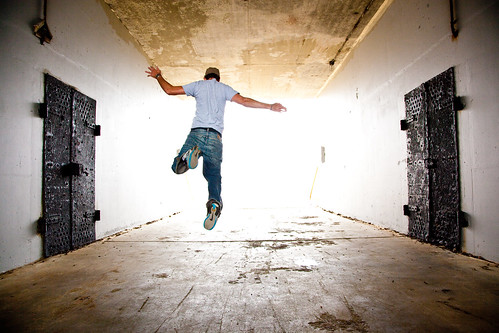
Knowing how to be yourself in social interactions is essential for building a rich social life and rewarding relationships with others.
And like many other people out there, you may need to learn, or better said, re-learn how to be yourself.
Well, I’m gonna guide you on this path towards confident and authentic self-expression.
The Journey of Learning How to Be Yourself
A friend of mine once went to a therapist and told him he wants to be himself more. The therapist asked him: Well, who else do you think you are?
It’s a thought-provoking question. As a social confidence coach, I think for many people, the answer is that while they are themselves most of the time, during lots of social interactions, they put up a front.
They don’t reveal themselves authentically and instead they create this fake social person which they show to others. This persona typically tries to embody all the qualities that others will like and approve of: niceness, chivalry, humor, competence, confidence, a good mood and so on.
Usually this tendency to hide the authentic self is grounded in some kind of insecurity, perhaps an inferiority complex or a negative self-image.
Essentially, learning how to be yourself is the process of dropping this fake persona, replacing it with your genuine person, and becoming comfortable with expressing it.
Now, I’m going to teach you a 3-step process for being yourself, which has been used successfully by my coaching clients.
If you want a more thorough understanding of this process, check out this free video guide.
1. Get In Touch With Yourself
I find that many persons have lost touch with their authentic self. They’ve gotten so used to putting up a fake self in social interactions that they don’t really know who they are anymore.
They don’t know what they truly like and dislike anymore, what they want, or what their real opinions are. Sometimes, they feel seriously alienated from themselves, which can be a source of anxiety or depression.
So the first key step in learning how to be yourself is to get in touch with yourself; with your passions, values, opinions and natural inclinations. The main way to do this is through personal reflection.
Ask yourself questions designed to reveal to you your real self. For instance ask yourself:
- What movies do I really like?
- What are my opinions about the current economy?
- What subjects do I enjoy to talk about?
- What values do I treasure the most?
Take some time to really think about these things. The better you know your true self, the more you can bring it out in social interactions. This leads me to the second step.
2. Make Small Steps Forward Towards Authenticity
The big practical issue regarding how to be yourself is that most people try to do it all at once. They wanna completely drop their mask all of sudden and be totally authentic with others.
Unfortunately, it doesn’t work that way. You need to identify the specific ways in which you are inauthentic in social interactions and then correct them one by one.
You need to gradually get out of your shell and become more authentic. And you do this by setting small change goals for yourself and working on achieving them.
In time, these small goals add up and soon enough, you find yourself behaving in a radically new way when dealing with others.
In fact, many people may actually say to you: “Wow, you’ve changed!” Becoming more authentic leaves external clues, and this is definitely one of them.
3. Calm Yourself Down
The vast majority of people who have a hard time being themselves feel somewhat anxious or tense when interacting with others. And when they even think about being real in a context, their anxiety shoots up.
The trick here is to calm yourself down and assure yourself that it’s OK to be yourself. Nobody else is going to do it for you, or at least not forever.
You do this through your self-talk. The fundamental skill to master is talking to yourself, in your inner dialog, in a manner that’s constructive and reassuring.
For example, when you feel anxious and the need to hide your true self, you can say to yourself something like: “Is perfectly fine to be myself. This person will probably like me as I am, and if they don’t, that’s their problem.”
This kind comforting self-talk will make the anxiety slowly dissipate and make it easier for you to be yourself during a social interaction with somebody.
You can find out more details about changing your self-talk and enhancing your confidence in my free conversation confidence guide. Make sure to check it out.
As you implement these three steps, you’ll create a positive shift in your self-image and you’ll become a lot more confident in social settings.
How to be yourself is something that’s absolutely learnable. The important thing is to take the right steps, to execute them effectively and to be committed.
I’ve seen numerous persons dramatically boost their social confidence and become truly genuine when dealing with others. If they can do it, so can you.
Image courtesy of I’ethan
